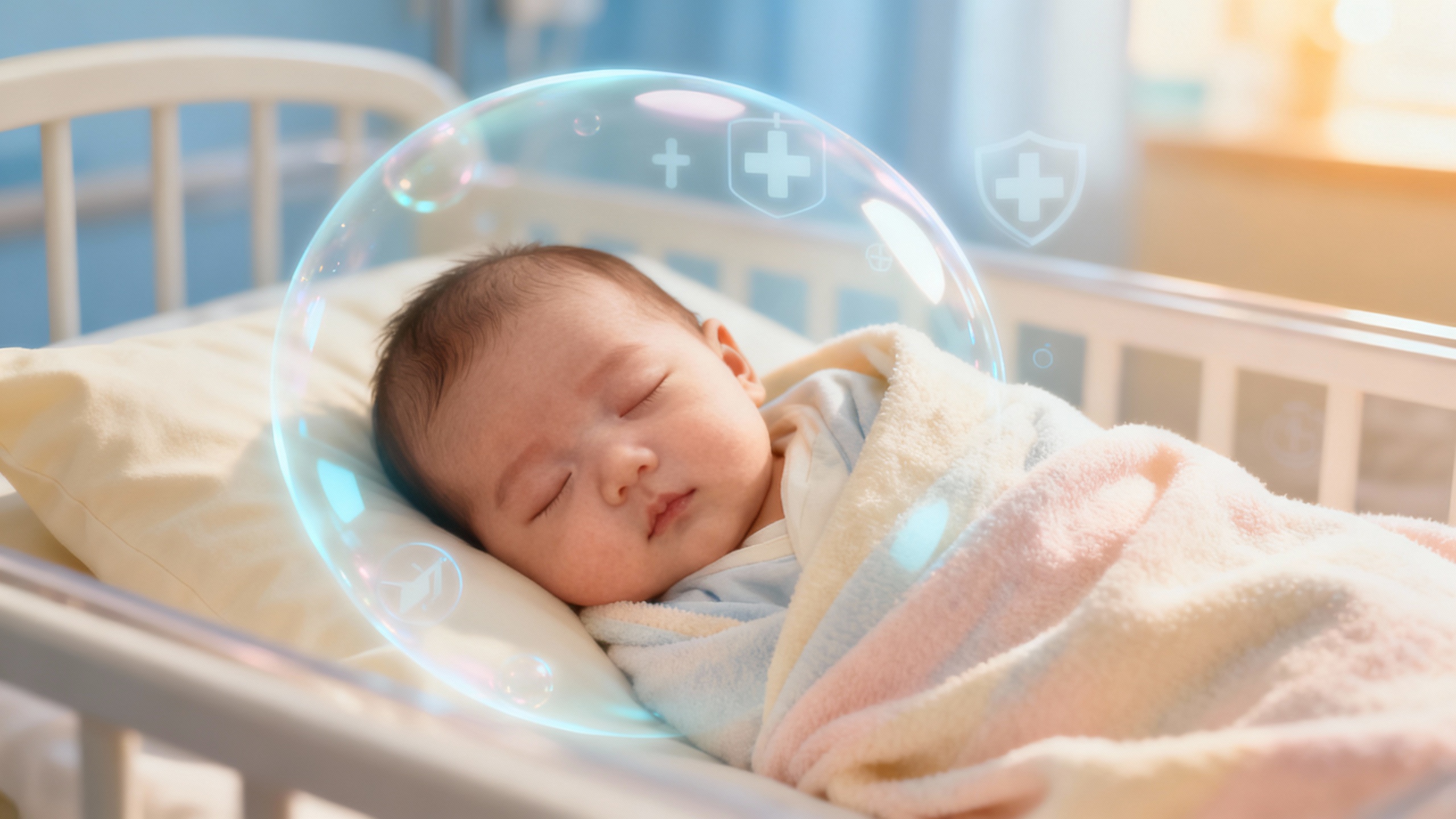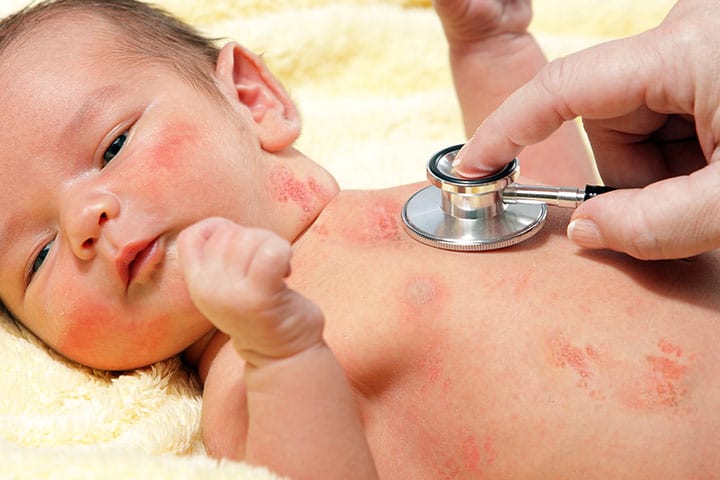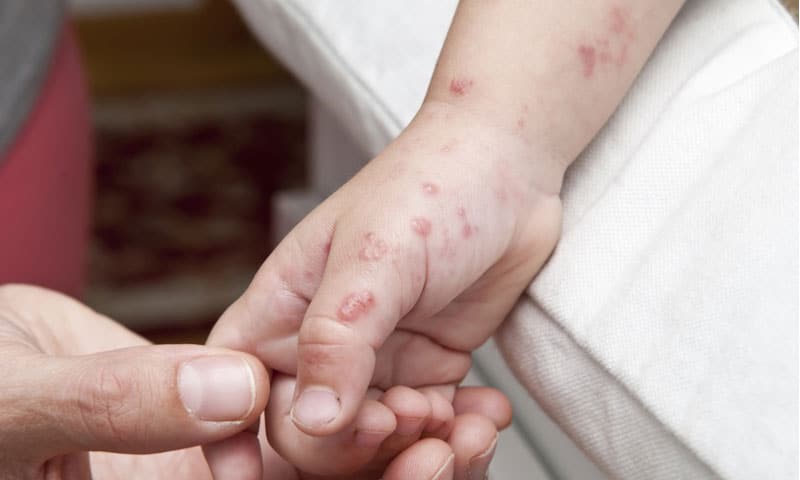Published 16 June 2020
Do Shingles Affect Babies?

Shingles are more commonly known as chickenpox in children and is a contagious disease caused by the varicella-zoster virus. In the past, getting chickenpox was the standard part of childhood, but recent outbreaks have become a less common occurrence in almost all age groups since 1995 when they introduced the chickenpox vaccine.
Babies can’t get the vaccine until they are almost 12 months old. However, chickenpox cases in babies under the age of 1 year decreased by 90% in the middle of 1995 and 2008. According to the Center for Disease Prevention and Control, this happened because of herd immunity.
 Herd immunity, also known as community immunity, can indirectly assist in protecting those in the community who can’t be immunized. This includes babies from falling ill to disease. When a large group of a population is vaccinated, the chances of an outbreak of the disease are greatly reduced. So when the vaccination of chickenpox was introduced, and most of the children were vaccinated, most young infants were not being exposed to chickenpox almost as much as before the vaccine was introduced.
Herd immunity, also known as community immunity, can indirectly assist in protecting those in the community who can’t be immunized. This includes babies from falling ill to disease. When a large group of a population is vaccinated, the chances of an outbreak of the disease are greatly reduced. So when the vaccination of chickenpox was introduced, and most of the children were vaccinated, most young infants were not being exposed to chickenpox almost as much as before the vaccine was introduced.
Babies can get chickenpox by being exposed to it, but if the babies have a passive immunity, they might get a more mild case than the others. Babies with passive immunity get it from their mothers who passed down her immunity to her baby while breastfeeding during the pregnancy’s last trimester.
Babies can also contract chickenpox from anyone who has shingles when they contact the fluid that comes out of blisters. The same virus causes chickenpox.
What are the Symptoms?
Some initial signs in babies include:
- Fatigue
- Coughing
- Fussiness
- Poor feeding
- Sleeping more than usual
- Fever or a high temperature of 101F to 102F
These symptoms might start 1 day or 3 days before the rash from chickenpox begins to appear. The very itchy, red patches frequently appear on the stomach, torso, face, or scalp. It is then followed by a rash all over. The rash might range from mild to severe, happening in successive waves for around 4 days. As much as 200 to 500 bumps that become itchy will eventually appear on the whole body. The rash from chickenpox has several stages. It begins as bumps that are tiny and red. Over a few days, the bumps turn into blisters filled with fluid. When the blisters burst, they leak and start to look like open sores. The blisters will then begin to heal and scab over. Chickenpox can last from 5 to 10 days. Because the rash appears in waves, it is very common to see blisters, open sores, and scabs simultaneously.
How long is the chickenpox incubation period?
Chickenpox is highly contagious and spreads via direct contact with saliva, mucus, or blisters of anyone with the infection. It can also spread via the air if an infected individual sneezes or coughs. The symptoms can begin to appear around 2 to 3 weeks after being exposed to the infection.
How long is an infected person contagious?
A person will become contagious around 48 hours before the rash begins to appear. They will still be contagious until all the blisters have dried and scabbed over. This might take at least five days or longer. This means that you should anticipate keeping your baby at home, away from daycares or any other place that has children for at least 7 to 10 days, beginning with the onset of a fever.
How often does a baby need to visit a doctor?
 f you feel like your baby has signs of chickenpox, you should get in touch with your local pediatrician even when the symptom and rash are mild. You must ensure that the doctor is aware if your baby has the following symptoms, as they can indicate deeper underlying issues:
f you feel like your baby has signs of chickenpox, you should get in touch with your local pediatrician even when the symptom and rash are mild. You must ensure that the doctor is aware if your baby has the following symptoms, as they can indicate deeper underlying issues:
- Rash in both eyes or one
- Vomiting
- Muscle tremor
- Severe cough
- Stiff neck
- Trouble breathing
- A rash that is warm to the touch
- Extreme drowsiness or not being able to wake up
How do you treat chickenpox in babies
It cannot be treated with antibiotics since chickenpox is caused by a virus. However, a bacterial infection can occur around the blisters. The baby’s doctor might prescribe antibiotics to assist in helping clear it. Rubbing or scratching can increase the risk of a bacterial infection. You can put a stop to a bacterial infection from growing by putting mittens in your baby’s hands and clipping their nails. It is essential that after bathing your baby you should not rub their skin. You should instead pat it dry. If your baby has a risk of developing issues their doctor might prescribe an antiviral medicine. This might be needed if the baby was born prematurely. The other remedies for chickenpox are aimed at giving your baby some level of comfort, just like you would do with an older child:
- Keep your baby hydrated
- Let your baby have enough rest
- Reduce itching with oatmeal baths and calamine lotions
What are some of the possible complications?
Usually, chickenpox does not have any complications and goes away on its own. Whether it be mild or severe, most people develop an immunity to chickenpox after getting the disease or the vaccine. However, if you have a weak immune system, you might get chickenpox again. When a woman is pregnant and happens to contract chickenpox, it can cause serious issues for her baby. When chickenpox is contracted early into the pregnancy, it might result in low birth weight or limb deformities. Babies who get chickenpox shortly after or before birth are at risk of severe life-threatening infections
